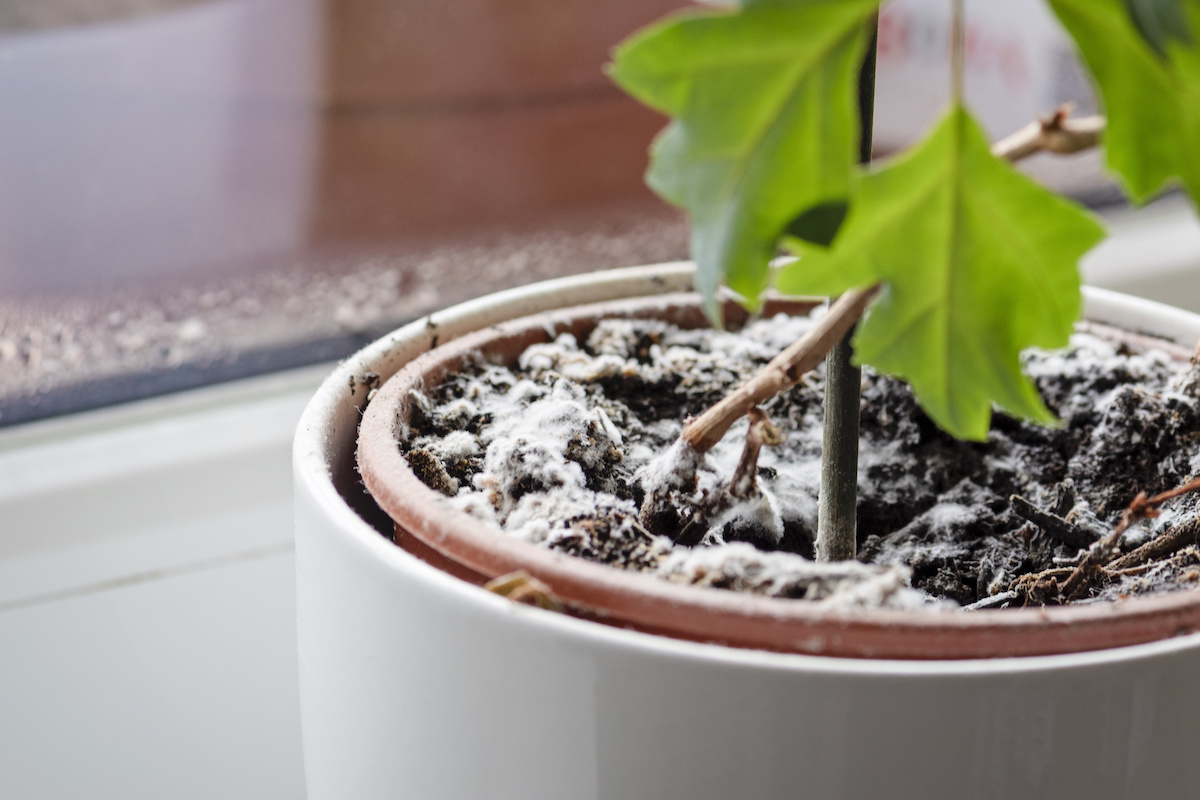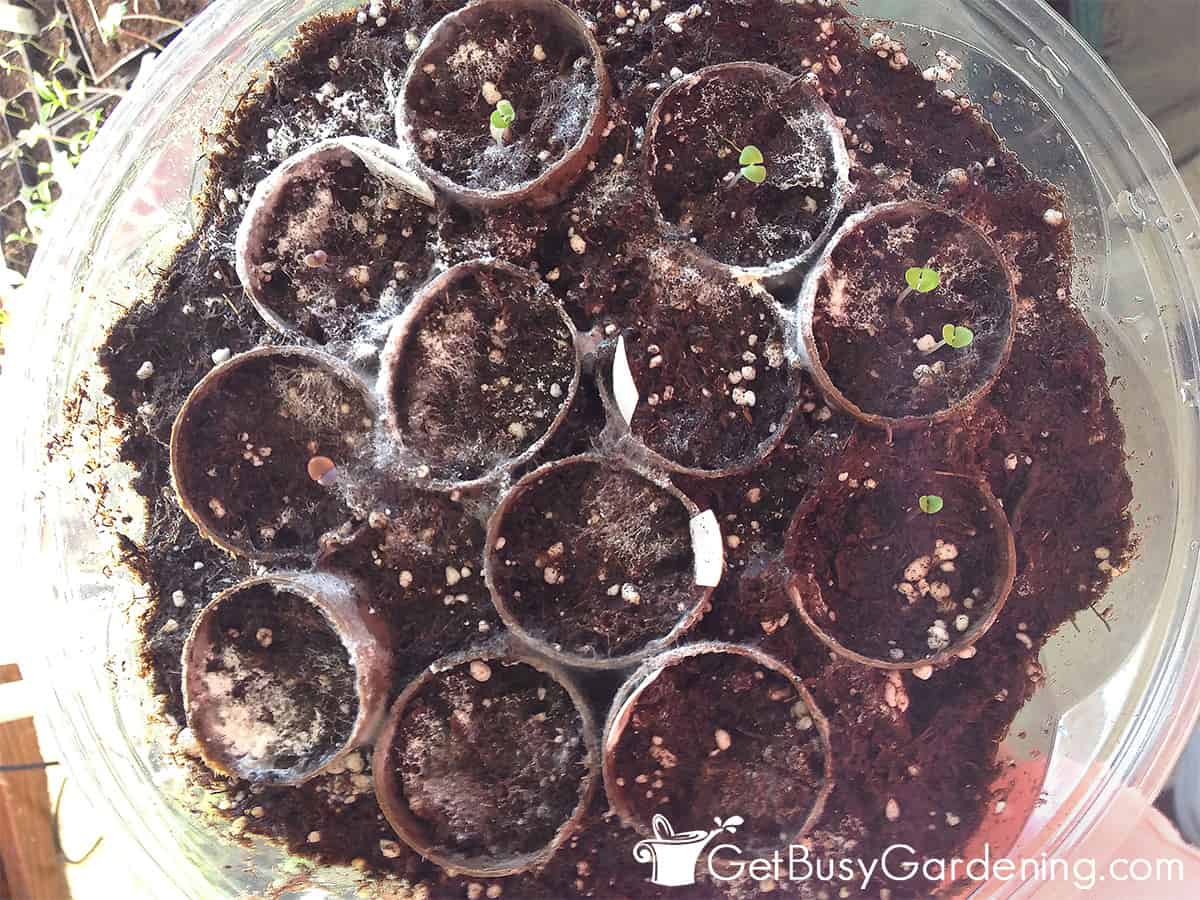

#Mold on seedlings how to#
How to make a baking soda spray to kill plant mold: However, you may find that the baking soda mixture is better to prevent white plant mold than cure it. For the anti-mold spray to be effective, you should mix the sodium bicarbonate with some dish soap, such as Dawn, and water. In the picture: white powdery mildew on tomato plantīaking soda is one of the most common home remedies used to eliminate plant mold.


How to Use Baking Soda to Get Rid of White Mold on Plants Even just improving your watering techniques can be enough to get rid of white mold spots on plants. You can also make an anti-mold spray by diluting regular milk with water and spraying it on the leaves. You probably have most of the ingredients in your cupboards to make a natural fungicide spray at home.įor example, common baking soda is excellent at removing the white fuzzy deposits from leaves. ( 1) How to Get Rid of Mold on PlantsĮven though white fungal infections on plants are harmless, getting rid of the white fluff is fairly easy. Of course, white mold on soil or leaves is unattractive, so you probably want to know how to get rid of it quickly. With some plants, this white leaf fuzz is unavoidable. According to the Royal Horticultural Society, white fungus on plants isn’t dangerous. You generally don’t have to worry if you notice a powdery film on plant leaves. Is White Fuzzy Mold Dangerous for Plants? Overwatering houseplants and keeping them in the shade can cause white mold to appear. The white fungal growth-also called mycelium-appears in warm, damp conditions, especially plants that grow in poor light. White fuzzy mold on plants develops when naturally-occurring fungal spores germinate and grow. Outdoor plants that are prone to white fungus infections include hydrangea, lilac, apple trees, oak trees, zinnia, roses, and strawberries. Indoor houseplants that are especially susceptible to mold include African violets, kalanchoe, begonias, indoor ivies, jade plants, and poinsettia. So, very often, plants growing in temperate climates that have warm, humid summers are prone to white powder mold. Fungi from the order Erysiphales thrive in warm, humid conditions. White fungal infections can affect most plants however, there are some types of trees, shrubs, and flowers that are more susceptible to powdery mildew. Plants That Are Most Susceptible to White Mold However, as the fungal growth spreads, the white stuff can cover the entire plant. At the start, the white mold looks like powdery spots. The fungal disease creates a powdery white growth on plant leaves and stems. Powdery mildew or white fuzzy mold on plants is commonly caused by the fungal pathogen Podosphaera xanthii. Neem oil is another natural mold remedy for indoor plants. Another natural method to get rid of houseplant mold is to make a milk spray, which helps to neutralize the cottony white mold. How to get rid of white mold on plants: to kill mold on indoor plants, you can use a mixture of baking soda, water, and dish soap. The airborne spores can easily infest nearby plants or create a furry white mold on plant soil. Although white mold won’t kill a healthy plant, it can affect the plant’s growth. This white fuzzy mold can affect indoor and outdoor plants, especially when growing conditions are warm, damp, and humid. The spores quickly grow on the plant leaves and stems to form a white fuzz that’s also called powdery mildew. White mold on plants looks like a fuzzy substance that is the result of fungus spores. Email Pinterest Facebook Twitter Linkedin


 0 kommentar(er)
0 kommentar(er)
